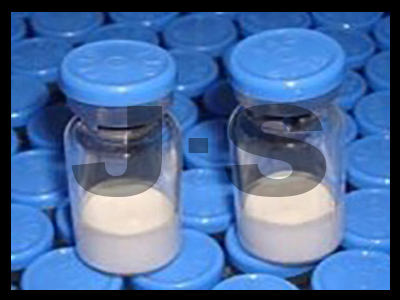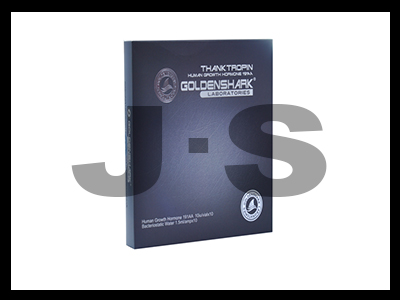
Growth Hormone Releasing Peptide -6 vial
GHRP-6 vial
Name: Growth Hormone Releasing Peptide-6 vial / GHRP-6 vial
Form: Sterile Filtered White lyophilized (freeze-dried) powder.
Dosage: 5mg/vial
Top color: Usually Black / blue / green / golden.
Inventory: 10000 vials for sell.
MOQ: 100 vials
Package: 10vials/kit. 10kits/bag/carton
Pack material: Shockproof film, shockproof envelope, and Cartons.
Logo: with or without both ok.
OEM: Offer OEM service. Customed dosage & brand & LOGO & package & top color. OEM MOQ 100kits (=1000vials)
Shipment: By express to buyers’ door. 100% make sure delivery.
Payment: TT/ Western Union/BTC/ETV/VISA and so on, please contact by email.
Shipment time: Within three working days after payment. Usually need ten days to arrive buyers’ address. Resend if lost.


DESCRIPTION
Growth Hormone Releasing Peptide-6 Synthetic is a single, non-glycosylated polypeptide chain containing 6 amino acids, having a molecular mass of 873 Dalton and a Molecular formula of C46H56N12O6.
Background:
Growth hormone-releasing peptides (GHRPs) constitute a group of small synthetic peptides that stimulate the growth hormone secretion and the downstream axis activity. Mounting evidences since the early 1980s delineated unexpected pharmacological cardioprotective and cytoprotective properties for the GHRPs. However, despite intense basic pharmacological research, alternatives to prevent cell and tissue demise before lethal insults have remained as an empty niche in the clinical armamentarium. Here, we have rigorously reviewed the investigational development of GHRPs and their clinical niching perspectives.
Methodology:
PubMed/MEDLINE databases, including original research and review articles, were explored. The search design was date escalated from 1980 and included articles in English only.
Results and Conclusions:
GHRPs bind to two different receptors (GHS-R1a and CD36), which redundantly or independently exert relevant biological effects. GHRPs’ binding to CD36 activates prosurvival pathways such as PI-3K/AKT1, thus reducing cellular death. Furthermore, GHRPs decrease reactive oxygen species (ROS) spillover, enhance the antioxidant defenses, and reduce inflammation. These cytoprotective abilities have been revealed in cardiac, neuronal, gastrointestinal, and hepatic cells, representing a comprehensive spectrum of protection of parenchymal organs. Antifibrotic effects have been attributed to some of the GHRPs by counteracting fibrogenic cytokines. In addition, GHRP family members have shown a potent myotropic effect by promoting anabolia and inhibiting catabolia. Finally, GHRPs exhibit a broad safety profile in preclinical and clinical settings. Despite these fragmented lines incite to envision multiple pharmacological uses for GHRPs, especially as a myocardial reperfusion damage-attenuating candidate, this family of “drugable” peptides awaits for a definitive clinical niche.
Keywords: GHRP, GHS, GH, cardioprotection, cytoprotection
The family of peptidyl growth hormone (GH) secretagogues with broad cytoprotective properties came to light by the American endocrinologist Cyril Bowers, who observed that chemical analogs of enkephalin amide showed GH-releasing activity upon their incorporation to pituitary cultures. GHRP-6 (His-DTrp-Ala-Trp-DPhe-Lys-NH2) appeared as the first in-line synthetic peptide that specifically elicited GH dosage-related release in vitro and in vivo.1 Afterward, a heptapeptide, GHRP-1, and two other hexapeptides, GHRP-2 and hexarelin, were synthesized and addressed by basic and only sporadic clinical studies.
GH-releasing peptide (GHRP) family members began to be distinguished by their ability to prevent cardiac cell demise and to induce the restoration of critical cardiac functions upon ischemia/reperfusion episodes.2,3 A novel generation of promising cardioprotective agents had started to rise and set a bridge between endocrinology and cardiology.
Although the history of some of the foremost biomedical discoveries is permeated by serendipity,4 we deem that the well-established pivotal role of the GH/insulin-like growth factor-1 (IGF-1) axis for cardiomyocyte physiology, and the subtle alterations of this axis within the pathogenicity of dilated cardiomyopathy (DCM) and left ventricular (LV) dysfunction, ignited the idea of assessing the potentiality of GHRP to alleviate cardiac pathologies.5 It was far to be anticipated on those early days, however, that the GHRP-mediated cardiotropic and cytoprotective effects are superior to those shown by the exogenous administration of GH and are not shared by GH-releasing hormone (GHRH) and that, importantly, GHRPs exert their pharmacological actions via GH-independent pathways that obviously represented another turning point in this history.3
The progresses obtained and the experiences accrued along the years of work with these pioneer synthetic, nonendogenous GHRPs gradually led to the discovery of ghrelin, the 28-aminoacid hormone with GH-releasing action secreted by gastric cells6,7 with orexigenic, cardioprotective, and cytoprotective abilities for a myriad of cell populations.8–12
GHRP-6 is a small molecular weight peptide, effective when orally administered, stable, and economically low priced than others.13 Our observation that GHRP-6 intravenous administration proved to be safe in a dose scale-up clinical trial in healthy human volunteers is significantly important.14 Our demonstration that there is no in vivo pharmacological interaction between the peptide and a well-validated cardiovascular drug such as the beta blocker agent metoprolol is also relevant for GHRP-6 pharmacological “positioning”.15 Since for years, GHRP-6 has been the platform of our experimental work; we address particular attention to its investigational development as for hexarelin and GHRP-2.
The goal of this review is to offer a summary of the most relevant achievements of the pharmacological knowledge with synthetic GHRP (GHRP-6, GHRP-2, and hexarelin) in a historical perspective line. General cyto- and cardioprotection fields are specially focused, since all these agents have contributed to the discovery of novel functions and mechanisms involved in cellular survival, senescence, and death. We deem that cardiologists, clinicians, and basic and clinical pharmacologists would receive some benefit from this text, in correspondence to the futuristic pharmacological opportunities offered by these agents. To date, cytoprotection remains as an orphan niche in contemporary medical armamentarium.
If OVERDOSE is suspected
If you think there has been an overdose, call your poison control center or get medical care right away. Be ready to tell or show what was taken, how much, and when it happened.
Consumer information use
If your symptoms or health problems do not get better or if they become worse, call your doctor.
Do not share your drugs with others and do not take anyone else's drugs.
Keep all drugs in a safe place. Keep all drugs out of the reach of children and pets.
Throw away unused or expired drugs. Do not flush down a toilet or pour down a drain unless you are told to do so. Check with your pharmacist if you have questions about the best way to throw out drugs. There may be drug take-back programs in your area.
Some drugs may have another patient information leaflet. Check with your pharmacist. If you have any questions about nandrolone, please talk with your doctor, nurse, pharmacist, or other health care provider.
If you think there has been an overdose, call your poison control center or get medical care right away. Be ready to tell or show what was taken, how much, and when it happened.
Warnings
PELIOSIS HEPATIS, A CONDITION IN WHICH LIVER AND SOMETIMES SPLENIC TISSUE IS REPLACED WITH BLOOD-FILLED CYSTS, HAS BEEN REPORTED IN PATIENTS RECEIVING ANDROGENIC ANABOLIC STEROID THERAPY. THESE CYSTS ARE SOMETIMES PRESENT WITH MINIMAL HEPATIC DYSFUNCTION, BUT AT OTHER TIMES THEY HAVE BEEN ASSOCIATED WITH LIVER FAILURE. THEY ARE OFTEN NOT RECOGNIZED UNTIL LIFE-THREATENING LIVER FAILURE OR INTRA-ABDOMINAL HEMORRHAGE DEVELOPS. WITHDRAWAL OF DRUG USUALLY RESULTS IN COMPLETE DISAPPEARANCE OF LESIONS. LIVER CELL TUMORS ARE ALSO REPORTED. MOST OFTEN THESE TUMORS ARE BENIGN AND ANDROGEN-DEPENDENT, BUT FATAL MALIGNANT TUMORS HAVE BEEN REPORTED. WITHDRAWAL OF DRUG OFTEN RESULTS IN REGRESSION OR CESSATION OF PROGRESSION OF THE TUMOR. HOWEVER, HEPATIC TUMORS ASSOCIATED WITH ANDROGENS OR ANABOLIC STEROIDS ARE MUCH MORE VASCULAR THAN OTHER HEPATIC TUMORS AND MAY BE SILENT UNTIL LIFE-THREATENING INTRA-ABDOMINAL HEMORRHAGE DEVELOPS. BLOOD LIPID CHANGES THAT ARE KNOWN TO BE ASSOCIATED WITH INCREASED RISK OF ATHEROSCLEROSIS ARE SEEN IN PATIENTS TREATED WITH ANDROGENS AND ANABOLIC STEROIDS. THESE CHANGES INCLUDE DECREASED HIGH-DENSITY LIPOPROTEIN AND SOMETIMES INCREASED LOW-DENSITY LIPOPROTEIN. THE CHANGES MAY BE VERY MARKED AND COULD HAVE A SERIOUS IMPACT ON THE RISK OF ATHEROSCLEROSIS AND CORONARY ARTERY DISEASE.
How do I store and/or throw out?
If you need to store it at home, talk with your doctor, nurse, or pharmacist about how to store it.
PROTECT FROM LIGHT. Store in carton until contents are used.
ATTENTION: All these products are strictly for LABORATORY AND RESEARCH PURPOSES ONLY. They are not to be used for any human and veterinary purposes.


Boldenone, Oxymetholone, Drostanolone, Testosterone, Nandrolone, Trenbolone
Designed by HuishangMedia
Copyright © 2008-2022 J·S Biology Co.,LTD All Rights Reserved
Design by Huishang Media
Under CC: ultimatearm, Freepik, Nhor Phai, DinosoftLabs, Vitaly Gorbachev, Kiranshastry, Pixel perfect
If you have any questions or ask for a quote, please submit your information here and we will respond to you immediately.